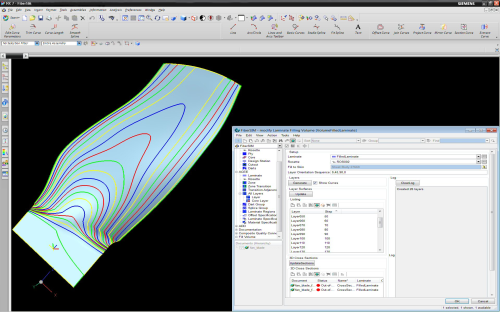
VISTAGY Inc, headquartered in Waltham, Massachusetts, USA, says many features of the new FiberSIM 2010 software were inspired by the adoption of composites in a growing number of industries. FiberSIM customers include Bombardier Aerospace, Sinomatech Wind Power Blade Co. and the Renault F1 Team.
“FiberSIM 2010 continues to strengthen our solutions for composites engineering by meeting the growing needs of OEMs and suppliers that are designing and building composite parts within the aerospace, automotive, wind energy, and various other industries,” says Steve Peck, director of product and market strategy at VISTAGY. “These manufacturers acknowledge that to take full advantage of the latest advancements in composite materials and processes, they need to focus on optimising designs to achieve the ideal balance between cost, performance, quality, manufacturability, reliability, and maintainability. FiberSIM 2010 gives them the tools to meet that objective.”
“FiberSIM has been the cornerstone of our composites engineering process for the last 8 years,” reports Ian Goddard, senior CAE engineer for Renault F1 Team. “It’s the only comprehensive software product that addresses the entire composites engineering process, meeting challenges from conception to deployment of the vehicles on the track. New functionally in FiberSIM 2010 makes it possible for us to exploit the advantages of the newest materials and processes in an effort to get the most optimised and competitive race cars to the starting line as quickly as possible.”
The new version of FiberSIM provides:
- advanced features for preserving composite design intent, which capture the critical inputs that drive the composite part design at the earliest stages of development and automate the creation of the detailed composite part definition to increase productivity, ensure adherence to design rules, and adapt to changes during the iterative design process.
- enhanced ability to design for manufacture of advanced materials and processes, including new Multi-Layer Material Simulation that provides insight into the drapeability of non-crimp fabrics (NCF) and other advanced materials, as well as the corresponding manufacturing processes, such as forming.
- an improved connection between design and analysis to enable more efficient transfer of composite design requirements.
- standardised 3D model-based representation of the composite part definition.
- functionality for validating that the as-built part is representative of the as-designed/analysed part, ensuring adherence to design specifications.
- improved user experience through a redesigned interface tailored to specific use cases.
